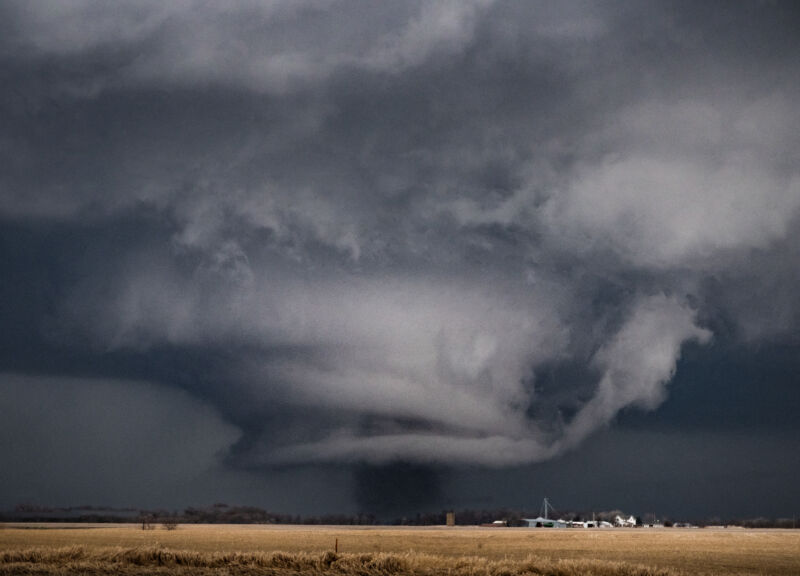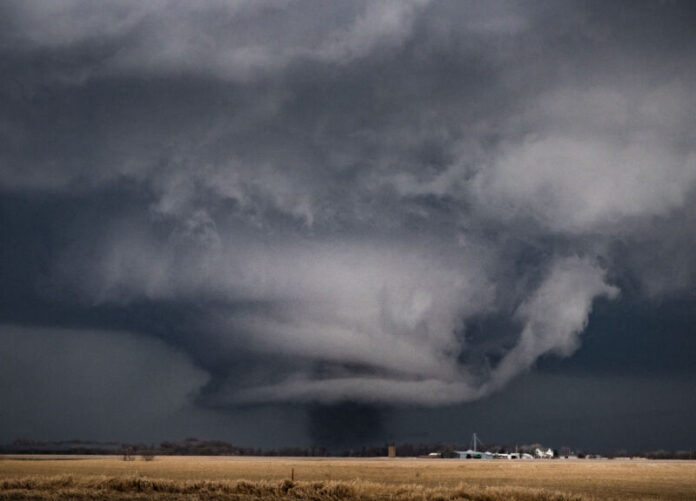
Enlarge / This stovepipe tornado formed under an intense rotating wall cloud near Keota, Iowa, on March 31, 2023. (credit: Jonah Lange/Getty )
One muggy day in July 1986, a news helicopter was recording footage of a festival in Minneapolis when the pilot and photographer glimpsed a tornado over nearby Brooklyn Park. They moved toward it, filming the powerful twister for 25 minutes, mesmerizing viewers watching it live on TV.
Watching as the helicopter hovered within maybe a half-mile of the twister was Robin Tanamachi, who was a kid growing up in Minneapolis at the time. “We were seeing all this really beautiful interior vortex structure,” she says. “I was just absolutely hooked on that, and I know I was not the only one.” Today, Tanamachi is a research meteorologist at Purdue University in West Lafayette, Indiana, and one of many researchers delving into twisters’ mysteries, searching for details about their formation that may bolster future forecasts.
Tornadoes can be elusive research subjects. Through chasing storms and using computer simulations, scientists have worked out the basic ingredients needed to spin up a twister, but two crucial questions continue to vex them: Why do some thunderstorms form tornadoes while others don’t? And how exactly do tornadoes get their spin?
Read 32 remaining paragraphs | Comments
Ars Technica - All contentContinue reading/original-link]




